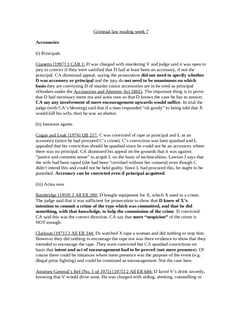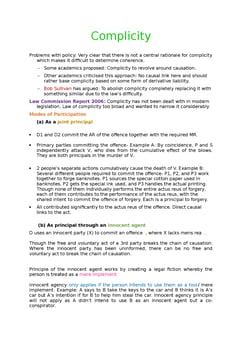Hyam v DPP (Director of Public Prosecutions) [1975] AC 55; [1974] 2 WLR 607; [1974] 2 All ER 41
Judgement for the case Hyam v DPP (Director of Public Prosecutions)
Table Of Contents
KEY POINTS
Crime, particularly homicide, is a challenge in the legal concept. Cases involving the intentional infliction of grievous bodily harm underscore the gravity of malevolent actions.
When a Defendant sets a house on fire to frighten occupants, the legal system grapples with assessing intent and foreseeing potential harm.
In scenarios where children are killed due to such actions, the legal focus turns to foreseeability and the Defendant's culpability.
The key question lies in whether death or serious harm is probable and foreseeable.
The crux of these legal inquiries centers on establishing the Defendant's sufficient intent in the nuanced aspects of criminal culpability for a fair and just resolution.
FACTS
In this case, Pearl Kathleen Hyam (“Appellant”) had a prior relationship with a man who later became engaged to B.
-
On July 15, 1972, in the early hours, the Appellant went to B's house and poured petrol through the letterbox, igniting it after stuffing newspaper inside.
Without warning, she left the burning house.
B managed to escape but her two daughters succumbed to the fumes.
-
The Appellant was charged with the murder of B's daughters.
Her defense asserted that she set fire to the house solely to frighten B, prompting her to leave the neighborhood.
During the trial, Ackner J. instructed the jury that the prosecution had to prove beyond a reasonable doubt that the Appellant intended to kill or cause serious bodily harm to B.
Ackner J. further clarified that if the jury believed the appellant knew it was highly probable the fire would result in death or serious bodily harm, the necessary intent was proven, irrespective of her motive to frighten B.
Emphasizing the intent to cause serious bodily harm rather than to kill, the Appellant was convicted of murder.
Despite her appeal against conviction, the Court of Appeal dismissed it, upholding the initial verdict.
JUDGEMENT
In the appellate proceedings, the judgment rendered, with notable dissent from Lord Diplock and Lord Kilbrandon, established the legal principle that an individual, even without the specific intent to jeopardize life, could be deemed culpable of murder if they knowingly undertook an action with the awareness that it was likely to cause severe bodily harm -understood in the context of being grievous or serious - and death ensued as a consequence.
Ultimately, the appeal met an unfavorable outcome as it was dismissed by the court.
COMMENTARY
-
The case Hyam v DPP explores historical and legislative aspects, including the impact of acts such as the Criminal Justice Act 1967 and the Homicide Act 1957.
The debate revolves around legal definitions, such as malice aforethought and intention, with varying perspectives from legal authorities.
The case touches on the Reg. v. Vickers [1957] 2 Q.B. 664 case and concludes with a mention of another case, Argyle Motors (Birkenhead) Ltd. v. Birkenhead Corporation, involving compensation claims related to street reconstruction.
Overall, it provides a concise yet detailed analysis of the complexities surrounding murder charges in the legal context.
For Further Study on Hyam v DPP (Director of Public Prosecutions)

Criminal Law notes fully updated for recent exams at Oxford and Camb...
Need instant answers? Our AI exam tutor is here to help.
Ask questions 🙋 Get answers 📔 It's simple 👁️👄👁️
Our AI is educated by the highest scoring students across all subjects and schools. Join hundreds of your peers today.
Get StartedRelated Product Samples
These product samples contain the same concepts we cover in this case.
| Criminal Law | Homicide Notes (20 pages) |
| Criminal law | Homicide And Intent Notes (16 pages) |
| Criminal Law | Mens Rea — Intention Recklessness And Negligence Notes (24 pages) |

